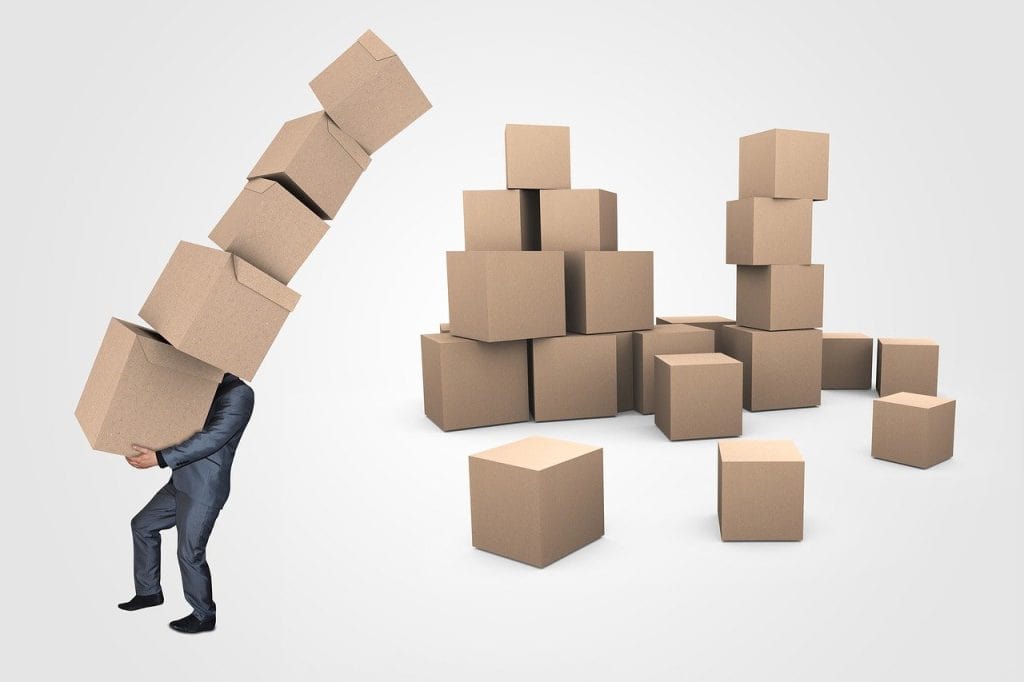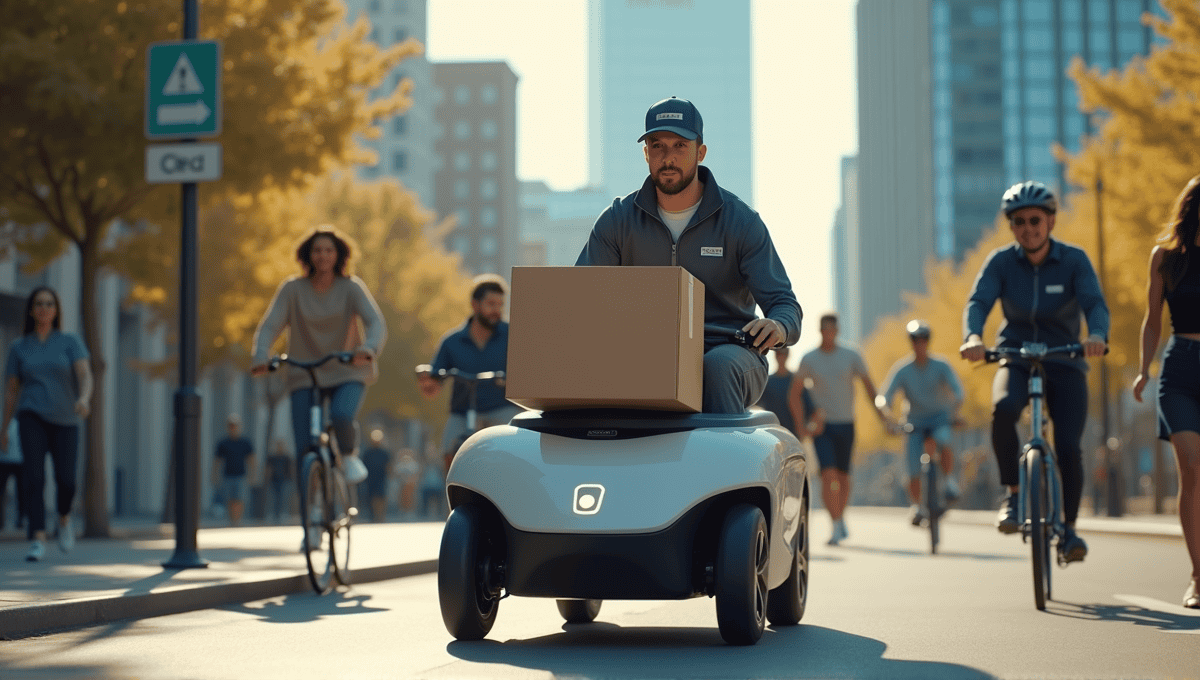As someone who’s spent decades in continuous improvement, I’ve encountered countless supply chain challenges. Yet, nothing quite compares to the beast that is last mile logistics. It’s the final frontier of delivery, where the rubber truly meets the road, quite often quite literally.
The Last-Mile Challenge
Let’s cut straight to it the last mile poses a colossal challenge. It’s the priciest, least efficient, and most intricate part of the supply chain. Picture the final stretch from distribution hub to doorstep. It seems simple, but it’s far from it. This logistical puzzle can gobble up as much as 53% of shipping costs. Why is this? because It’s fragmented, unpredictable, and packed with variables that could stump even the savviest operations manager.
Consider in full what’s involved, multiple stops, urban gridlock, parking nightmares, and occasional encounters with not-so-friendly local animals. It’s a sharp contrast to the relatively smooth flow between warehouses. A key aspect of logistics is customers aren’t concerned with these hurdles. Their main focus is receiving their orders promptly and accurately.
Evolving Consumer Expectations

Let’s investigate how evolving consumer behavior has reshaped the last-mile landscape at its core. The surge in e-commerce has catapulted customer expectations to unprecedented levels. Gone are the days when a week-long delivery window sufficed; that’s as outdated as analog technology.
Today’s market demands swift fulfilment. Same-day delivery which was once revolutionary, is becoming the norm. We’re witnessing requests for two-hour delivery windows, live shipment tracking, and the ability to adjust delivery instructions instantly. Consumers now expect deliveries to diverse locations – from their workplace to secure lockers, or even unconventional spots and they expect flawless execution of these requests.
This major shift has compelled companies to radically reassess their last-mile logistics strategies. The focus has expanded beyond mere transportation from origin to destination. It now encompasses crafting a delivery experience that rivals the efficiency of a precision-engineered production line. The stakes in this new landscape are higher, and the margin for error increasingly narrow.
Technological Innovations Driving Change
While I’m typically cautious about emerging technologies, the advancements in last-mile logistics are undeniably compelling. We’re witnessing the deployment of AI systems capable of predicting delivery times with remarkable precision, IoT devices offering real-time package tracking, and autonomous robots navigating urban environments for parcel delivery.
Route optimization stands out as a particularly promising development. AI algorithms are processing vast datasets and encompassing traffic patterns, Weather conditions, and historical delivery information. This enables them to generate routes that would impress even the most seasoned logistics professionals. It’s akin to having an ultra-efficient, infallible dispatcher operating around the clock.
The area of autonomous vehicles also deserves attention.. While we haven’t yet reached the stage of driverless delivery vans, the technology is progressing at a rapid pace.
Several companies are already conducting pilot programs for autonomous delivery vehicles in select regions. This innovation has the potential to be truly disruptive to the industry and potentially leading to significant reductions in labor costs and substantial improvements in operational efficiency.
Sustainable Solutions for Urban Deliveries
Here’s where things get interesting – and where my passion for sustainability comes into play. The last mile isn’t just a logistical challenge; it’s also an environmental one. All those delivery vans clogging up city streets? They’re pumping out CO2 faster than a politician pumps out promises during election season.
The good news is: we’re seeing a surge in eco-friendly alternatives. Electric delivery vehicles are becoming more common and with companies like Amazon and UPS investing heavily in electric fleets. For shorter distances, cargo bikes are making a comeback. In dense urban areas, these pedal-powered (or electric-assisted) bikes can often outperform vans in terms of speed and efficiency.
There’s also a growing focus on green packaging. Companies are experimenting with reusable packaging systems and biodegradable materials. It’s not just about reducing waste; it’s about creating a circular economy in the last mile.
The Rise of Micro-Fulfillment Centers
Remember when I mentioned turning around struggling manufacturing facilities? Well, the same principles of lean management that work on the factory floor are now being applied to urban logistics. Enter the micro-fulfillment center.
These are small-scale distribution hubs located right in the heart of urban areas. Instead of massive warehouses on the outskirts of town, there compact, highly automated facilities that can be tucked into existing urban structures. They’re like the convenience stores of the logistics world. They can be small, but packing a punch when it comes to efficiency.
The beauty of micro-fulfillment centers is that they bring inventory closer to the customer. This dramatically reducing delivery times and transportation costs. It’s a perfect example of how lean principles can be adapted to meet the challenges of modern logistics.
Crowdsourced and Gig Economy Delivery Models

The rise of platforms like Uber Eats, DoorDash, and Amazon Flex has fundamentally changed the last mile landscape. These gig economy models offer unparalleled flexibility and scalability. Need to ramp up deliveries for the holiday rush? No problem – just onboard more drivers.
But – and it’s a big but – this model comes with its own set of challenges. Quality control can be a nightmare. You’re relying on a constantly changing workforce, many of whom are doing this as a side hustle. And let’s not even get started on the ethical implications and labor issues.
From a lean management perspective, the gig economy model is a double-edged sword. On one hand, it’s incredibly agile and responsive to demand fluctuations. On the other, it can be highly inefficient. This can create drivers crisscrossing each other’s paths and duplicating efforts.
Data-Driven Optimization Strategies
Data! Just the word gets my heart racing. In the realm of last-mile logistics, data reigns supreme. We’re not merely tracking packages anymore; we’re delving into predictive analytics that forecast demand surges, machine learning algorithms that perpetually refine routing, and IoT sensors that deliver real-time insights into every delivery nuance.
This data goldmine enables optimization on an unprecedented scale. We can surgically identify delivery process bottlenecks, dynamically adjust staffing, and even predict which customers are likeliest to be home for a delivery.
The twist? All this data is worthless if misused without a human touch. We need sharp minds to interpret the data, detect patterns, and make strategic decisions from the insights. Possessing the tools isn’t sufficient; mastery in wielding them is crucial.
Overcoming Infrastructure and Regulatory Hurdles
Now, let’s address the elephant in the room: infrastructure. Even the most advanced last-mile logistics system in the world is hamstrung by pothole-laden streets and scarce parking. Navigating this mess feels like an uphill battle.
Cities weren’t built with e-commerce deliveries in mind, and the cracks are showing. Innovative solutions are emerging, like leveraging public transport for parcel delivery during off-peak hours, but the road ahead is still long.
And then there’s the regulatory issue impact. Each city has its own set of rules on everything from parking to drone deliveries. For logistics companies, navigating this patchwork of regulations is a never-ending challenge.
The Future of Last-Mile Logistics
Looking ahead, the trajectory of last-mile logistics appears to be converging on integration and automation. We’re likely to witness a sophisticated fusion of diverse delivery methods: drones servicing rural areas, autonomous robots handling urban deliveries, and human couriers addressing complex scenarios that demand a personal approach.
The potential of AI-assisted lean management tools is particularly intriguing. Envision a system capable of dynamically adjusting delivery strategies based on real-time data, simultaneously optimizing for cost-efficiency, speed, and sustainability. Such capabilities would have been considered purely speculative when many of us began our careers in logistics.
However, it’s crucial to note that regardless of technological advancements, the core tenets of lean management will remain relevant. The focus on waste elimination, continuous improvement, and prioritizing customer value creation will continue to be fundamental.
The last mile, often dubbed the Everest of logistics, also harbors unparalleled opportunities for innovation. As we forge ahead with optimization and innovation here, we aren’t just refining delivery processes – we’re reshaping urban infrastructures and economic landscapes. This multifaceted challenge demands our undivided focus and resources.





